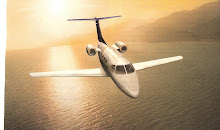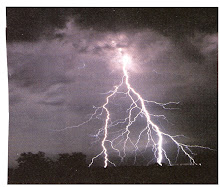Hi Readers: In flying, our radio and radar communications are all-important - a necessity from the beginning - to get from one point to another - from departure to arrival safely. This includes our use of radar navigation en route - some a convenience, others a necessity.
These radio and radar communications originate from a broad spectrum of frequencies (electromagnetic waves) broadcast and received by Transmitters and Receivers from a Low frequency (100 Khz) through MF, HF, VHF, UHF, SHF, and to EHF (Extremely High Frequency at 100 Ghz). If you've forgotten, Kilo is one thousand, Mega is one million, Gigga is one billion - and, of course, "Hertz" is the ICAO designation for cycles/second. These frequencies in the U.S. are assigned by the Federal Communication Commission (FCC) in collaboration with the International Civil Aviation Organization (ICAO).
In the very beginning, whether a local or X-C flight, we must necessarily contact a Ground Control, a Tower, or FSS to get departure instructions, and by regulation we must use the assigned frequencies. Normally, Towers and FSS's are assigned VHF frequencies (118+ Mhz). These frequencies can be found for any airport designated by the FAA. Ground Control frequencies are also in the VHF range, 121.66 to 121.9 Mhz.
En Route, we should expect to communicate with VORs and VORTACs (108-118 Mhz); or use GPS on 1215-1240 Mhz; or ARTC as assigned, perhaps NDB on 190-535 Khz; or LORAN C at 100 Khz; Mode S radar at 1030, 1090 Mhz; TCAS at 9660-1215 Mhz; and ARSR at 1215-1400 Mhz.
On Descent and Approach we'll use ILS Localizer on 108-112 Mhs (VHF) and Glideslope on 328.6 - 335.4 (UHF). And then back to the Tower and Ground Control frequencies. All of these communication frequencies have to be known and used, as needed, by the pilot. The emergency frequency is still 121.5 Mhz.
UNICOM (No Tower or FSS) uses CTAF (Common Traffic Advisory Frequencies) of 122.7-123.0 Mhz. Other communications frequencies designated by the FCC are air-to-air and private airports on 122.750 and 122.850 Mhz; air-to-air GA Helicopter communications on 123.025 Mhz; and Aviation Instruction, Glider, and Hot-Air Balloon operations in the 123.300 Mhz range.
Other Airborne frequency assignmentss are Microwave Landing Systems (MLS) used by DOT, DOD, and NASA are 5000-5150 Mhz, with DME at 960-1215 Mhz; Airborne Weather Navigation Radar at 9300-9500 Mhz; Airborne Radar Altimeter at 4200-4400 Mhz; and Precision Approach Radar (PAR) used by the Military at 9000-9200 Mhz.
Large Ship Radar at 2900-3100 Mhz and above; Amateur Radio (HAM) at 1800 Khz to 250 Ghz, and Space Communications at 2290-2300 Mhz are of interest to many users.
Surface frequencies of interest, also, are AM Radio 535-1700 Khz; FM Radio 88-108 Mhz; Short Wave Radio 5.9-26.1 Mhz; CB Radio 29.96-27.41 Mhz; Television 54-88 Mhz and 174-220 Mhz, depending on the Channel; Cordless Telephones 40 to 50 Mhz; and Cell Phones at 824-849 Mhz.
As the need for air travel and the increase of airplanes in the airspace appear, the lack of available radio frequencies may become a stumbling block in operations as early as 2005. The demand for assigned frequencies is getting beyond the supply. A log-term digital plan seems to be the best option for the future.
Thanks for listening. R.S.
Showing posts with label ICAO. Show all posts
Showing posts with label ICAO. Show all posts
Friday, December 28, 2007
Radio and Radar Communications
Labels:
air travel,
airspace,
communications,
CTAF,
FCC,
FSS,
GPS,
ICAO,
localizer,
Radar,
Radio,
tower operations,
UNICOM
Wednesday, November 28, 2007
The Latest and Such!
Hi Readers: The current pilot shortage is having an effect on airline operations. It has been reported that American Eagle, subsidiary of American Airlines, and others, have eliminated flights from their winter schedule because of the shortage. American Eagle had previously reduced the minimum experience requirements to 500 hours to attract pilots. New training standards, recently adopted by ICAO (International Civil Aviation Organization), and the increased use of simulators is expected to qualify more First Officers. This news is well worth investigating for new pilots, but remember, more experience, better the chances. Your heading for the big airplanes.
Now it's time for a little trivia (so I can get my act together and before the November NTSB Accident count). Did you know that we now have computer concepts beyond the planning stage that will replace our current computers? More 'search engines', more information, etc. Do we need more and more? How many hours are we spending on the computer to find something that we really don't need or can't use? Okay, then, we'll accept the future computers and get on with it!
Now for the amateur poetry section: I composed this one sleepless night.
Now it's time for a little trivia (so I can get my act together and before the November NTSB Accident count). Did you know that we now have computer concepts beyond the planning stage that will replace our current computers? More 'search engines', more information, etc. Do we need more and more? How many hours are we spending on the computer to find something that we really don't need or can't use? Okay, then, we'll accept the future computers and get on with it!
Now for the amateur poetry section: I composed this one sleepless night.
Alone
Yes, I am alone, I'm glad you asked,
Not my choice, too often not happy,
Am I up to the task?
To myself, I say, is this really living?
I wonder, little better than dead.
Relatives few, not a wife, yet considerable
Strife,
A friend or two, no one to please or command,
That's my life.
I never thought I'd reach this far,
Now maybe too far, maybe best to go,
I don't know.
Still, each day arrives, I begin, then hesitate,
The face of it, often hard, seems not to end,
Somehow I continue on, and try again.
A choice you say, I think not,
When I look at others, oh so slow,
I think not for me, fast forward, let me go.
Some say busy is best, later you can rest.
A project, perhaps, a friend in need,
Anyway a good deed.
Better you feel, the sadness gone,
Life is worth living.
A way yet to go, with GOD and grace, and giving,
Still, I don't know.
Robert Shaw
If you are reading this, you are probably looking for more and current information on aviation subjects. This I will provide in the future. If there is something special that I can help you with, E-mail me at roberthshaw@sbcglobal.net. And, don't forget, I need your feedback, too.
Thanks for listening. R.S.
Subscribe to:
Posts (Atom)










